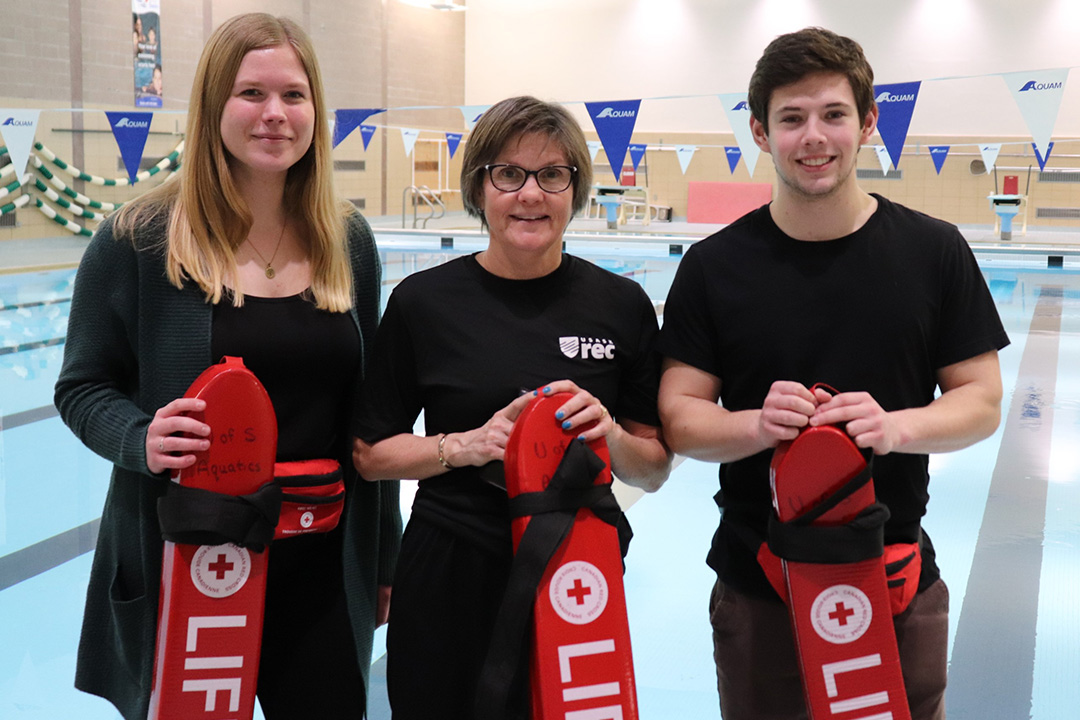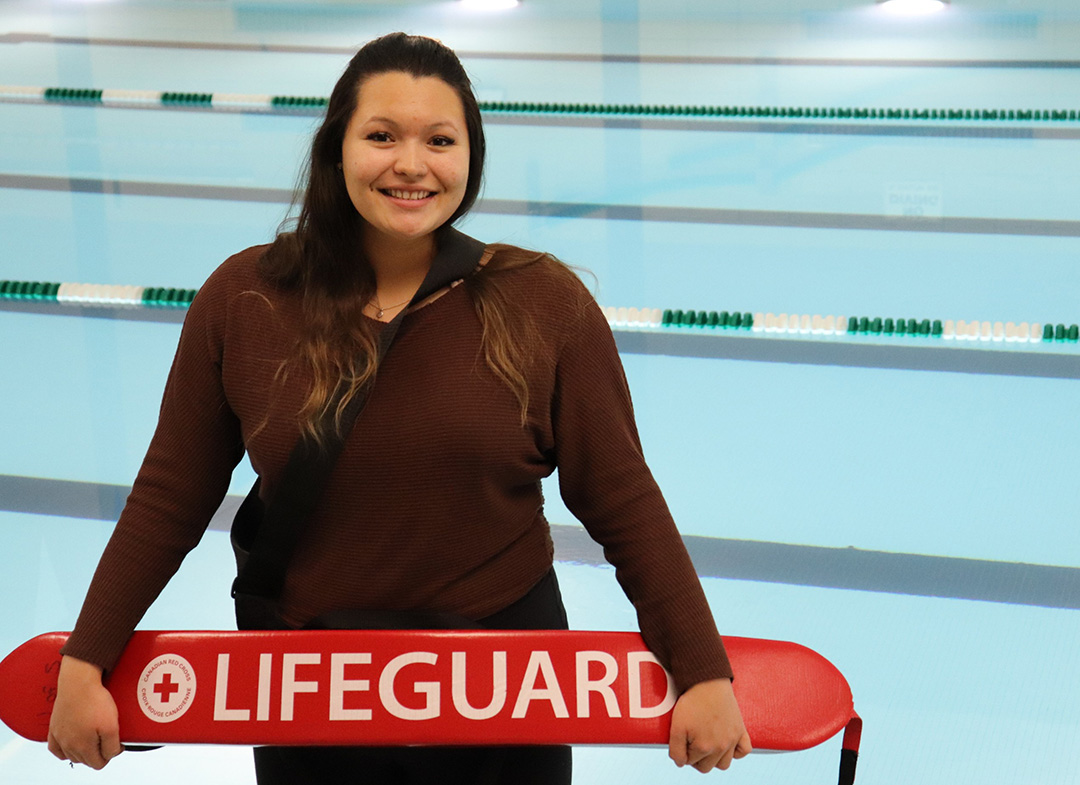
USask Rec supports northern communities with swimming and water safety courses
Many northern communities in Saskatchewan are surrounded by bodies of water, which leads to a rise in concern over water safety each year.
By Alyssa Wiebe | Kinesiology Communications
Since 2016, USask Rec has offered the Indigenous Swimming and Water Safety Program each summer in northern Saskatchewan, in partnership with the Canadian Red Cross. The program began in Alberta in 2013, before branching out to Saskatchewan, Manitoba and Ontario, with plans to move further east this summer.
“This has a tremendous impact on our northern communities as it relates to Truth and Reconciliation,” said USask Rec Aquatics Co-ordinator Kim Jones. “The majority of Indigenous reserves are in, on, or around bodies of water. The more we can do to impart the Prepare! Stay Safe! Survive model, the fewer drownings we will see in our northern communities.”
The Canadian Red Cross employs one full-time staff member to continue the development of the program and ensure its continued success each year. The goals of the program are injury prevention, water safety, and preventing water fatalities, along with other preventable incidents. To accomplish these goals, participants teach swimming lessons, babysitter courses, stay safe, emergency and standard first-aid training, respect education, and assistant lifeguard courses.
The program has employed a total of 25 university students, with 24 attending the University of Saskatchewan (USask), focusing on the delivery of this program. Jones collaborates with the Red Cross to schedule and train all staff members and co-ordinate the logistics from week-to-week. Beginning in June and running until the end of August, staff members are housed at hotels, cabins, teacherages, or health-care accommodations in the communities. In a few occasions, participants also had the opportunity to participate in cultural camps.
This year, due to the global pandemic, the program will have a different look. Three staff have been retained to help deliver virtual programs, where possible. Although not ideal, it is important to keep the information around swimming and water safety front of mind heading into the summer.
College of Kinesiology student Jaimie Fiddler of Warman has been with the program for the past two years and continues to see the importance of bringing water safety training to northern communities.
“I got involved because it was great opportunity to be a positive role model to young Indigenous children and youth, and I love teaching swimming and working with children,” said Fiddler, a member of the Salt River First Nations Band in Northwest Territories.
“It is really important to teach children, at a young age, about water safety and learning how to swim, since they have so many lakes and swimming areas with no supervision.”
Fiddler sees herself as a role model because it allows children to see someone of a similar background in a leadership position—such as a swim instructor—and encourage them to become involved in water safety, swimming and learning to take a leadership role in their community.
“Being a role model in a community for younger generations is so important, especially in northern communities, and I am hoping children that interact with the instructors who visit will begin to take on that role for their siblings, friends, and even neighbours,” she said.
Another focus is to provide youth in Indigenous communities the opportunity to become instructors and lifeguards themselves, moving away from a dependency-based model to a community-driven self-sustained learning model.
Kinesiology student Sabrina Lemke of Saskatoon has been with the program since 2017.
“The program with the Canadian Red Cross was an opportunity for me to become more invested in relationship-building with Indigenous communities, join an effort that creates connections and makes a difference, and to use my knowledge from kinesiology, lifeguarding, First Aid, and swimming to deliver programs that help to fill gaps in what is available to each community that brings us in.”
Starting out as an instructor for two years and taking over as the co-ordinator in Saskatchewan, Lemke has seen the impact it has had on the community.
“This program offers courses and opportunities that would otherwise be unavailable to these communities, it encourages knowledge sharing, and it is intended to promote community-sustained programming that supports resiliency and safety.”
For more information on the Indigenous Swimming and Water Safety Program and partnership, contact kim.jones@usask.ca.
